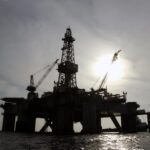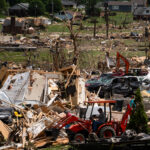The National Oceanic and Atmospheric Administration said the last two tsunami detection buoys have been placed, completing the U.S. tsunami warning network.
The two sensors were deployed off the Solomon Islands and will provide real-time data about destructive waves that could threaten Hawaii, the U.S. territories in the Pacific, the West Coast and Pacific Rim nations.
NOAA said tsunami stations are now positioned between Hawaii and every seismic zone that could generate a tsunami affect the United States.
Buoys in the western Atlantic, Gulf of Mexico and Caribbean have been monitoring the East and Gulf coasts.
“Completing the U.S. tsunami warning system is truly a monumental triumph that includes the advancement of the science, the development and testing of cutting edge technology, and the large scale project management skills that brought it all together on a global scale,” said Conrad C. Lautenbacher, NOAA’s administrator.
The stations consist of a bottom pressure sensor anchored to the sea floor and a companion moored surface buoy. Acoustic and satellite links relay the data to warning centers.
Since the deadly Indonesian tsunami in December 2004, NOAA has expanding the buoy network from six in the eastern Pacific to 39 across the Pacific and Atlantic.
National Oceanic and Atmospheric Administration
Was this article valuable?
Here are more articles you may enjoy.

 Harvard Settles Lawsuit by Former Student Claiming Antisemitism
Harvard Settles Lawsuit by Former Student Claiming Antisemitism  Two Chevron Workers Die of Injuries From Angola Platform Fire
Two Chevron Workers Die of Injuries From Angola Platform Fire  Cars Are Getting Smarter. Why It Matters for Claims Professionals
Cars Are Getting Smarter. Why It Matters for Claims Professionals  Trump Administration Targets Resiliency Funds to Shrink FEMA’s Role
Trump Administration Targets Resiliency Funds to Shrink FEMA’s Role 